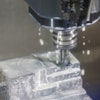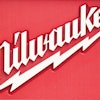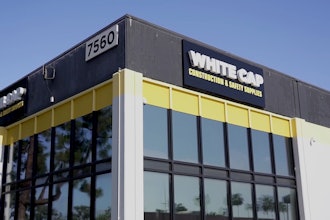Canton, OH - The Timken Company reported sales of $1.1 billion for the second quarter of 2013, a decrease of 16 percent from the prior year. The decline primarily reflects lower off-highway, industrial distribution, and oil and gas demand as well as the impact of the company's market strategy in the light-vehicle sector, partially offset by the benefit of acquisitions. In addition, sales reflect a $49 million decline in raw material surcharges from the prior-year quarter.
Timken generated net income in the second quarter of $82.8 million, or $0.86 per diluted share. This compared with $183.6 million, or $1.86 per diluted share, during the same period a year ago, which included income of $69 million, or $0.70 per share, from Continued Dumping and Subsidy Offset Act (CDSOA) receipts. The decrease in second-quarter earnings also reflects lower demand as well as unfavorable sales mix.
The decrease was partially offset by lower raw material costs (net of surcharges) and selling and administrative expenses as well as lower costs related to previously announced plant closures.
"We continue to perform very well, maintaining double-digit operating margins despite weak demand lingering in many global markets," said James W. Griffith, Timken president and chief executive officer. "Although our outlook for the year now reflects a more modest market recovery in the second half, we continue to expect strong financial performance for the remainder of the year."
Among recent developments, the company:
-- Expanded its industrial services capabilities through the acquisition of the Standard Machine business, which provides new gearboxes, gearbox service and repair, and field technical services in Canada and the western United States;
-- Started up a second ladle refining station at the Faircrest Steel Plant, the third major system to come on line this year in the Steel business. Part of a plan that includes installing a new vertical continuous caster, the investments are designed to bring greater operating efficiencies and new market opportunities to the company;
-- Returned $104 million in capital to shareholders in the quarter through the repurchase of 1.4 million shares and dividends; and
-- Announced that the Timken Board of Directors formed a Strategy Committee to evaluate a potential separation of the company's Steel business from its other businesses and to review the company's corporate governance and capital allocation strategy.
Six Months' Results
Timken posted sales of $2.2 billion in the first half of 2013, down 20 percent from the same period in 2012. The decrease reflects lower off-highway, industrial distribution and oil and gas demand as well as the impact of the company's market strategy in the light-vehicle sector, partially offset by acquisitions. In addition, a $121 million decline in raw material surcharges from the prior-year period negatively impacted first-half revenues.
In the first half of 2013, the company generated net income of $157.9 million, or $1.63 per diluted share.That compares with $339.3 million, or $3.44 per diluted share, in the same period last year, which included CDSOA receipts of $69 million, or $0.70 per share. The decrease in earnings during the first half of 2013 was driven by lower demand, sales mix and higher manufacturing costs, partially offset by improved pricing and lower selling and administrative expenses as well as lower costs related to previously announced plant closures (reference Table 2 for comparison of results).
As of June 30, 2013, total debt was $462.5 million, or 16.6 percent of capital. The company had cash of $396.8 million, resulting in $65.7 million of net debt, compared with a net cash position of $107.4 million as of December 31, 2012.
In the first half of 2013, the company generated $139.5 million in cash from operating activities. Excluding discretionary pension contributions of $66.3 million, net of tax, free cash flow (operating cash after capital expenditures and dividends) was $16.7 million. In addition, the company repurchased 1.4 million shares totaling $82 million and made three acquisitions totaling $67 million. The company ended the quarter with $1.3 billion of liquidity.
Mobile Industries Segment Results
In the second quarter, Mobile Industries' sales of $393.1 million decreased 12 percent compared with last year's second-quarter sales of $448.4 million. The $55 million decrease included $30 million related to the company's market strategy primarily in the light-vehicle sector. The remaining decrease was driven by lower volume in most markets led by lower off-highway and rail demand, partially offset by the Interlube Systems acquisition.
EBIT for the segment was $52.4 million for the second quarter, or 13.3 percent of sales, up 7 percent from $48.8 million, or 10.9 percent of sales, in the same period a year ago. The increase was driven primarily by lower manufacturing costs, reduced selling and administrative expense and reduced plant closure costs, partially offset by lower volume.
For the first half of 2013, Mobile Industries' sales were $790.2 million, a decrease of 14 percent from the same period a year ago. First-half 2013 EBIT was $103.6 million, or 13.1 percent of sales, down from $135.5 million, or 14.8 percent of sales, in the prior-year period. The decrease in EBIT was driven primarily by lower volume and the impact of exited business, partially offset by lower selling and administrative expense and lower plant closure costs.
Outlook
The company revised its outlook for the full year based on a slower-than-expected economic recovery in the second half of 2013. The Timken Company now expects 2013 sales to be 10 percent lower year-over-year with:
-- Mobile Industries sales down 7 to 12 percent for the year due to the impact of lower customer demand and the company's market strategy;
-- Process Industries sales to be down 2 to 7 percent, due to weaker industrial markets, partially offset by the benefit of acquisitions;
-- Aerospace sales up 3 to 8 percent, due to increased demand in civil and defense markets; and
-- Steel sales down 15 to 20 percent, driven by lower industrial and oil and gas end-market demand and surcharges.
Timken projects 2013 annual earnings per diluted share to range from $3.30 to $3.60, which includes approximately $0.15 per share for previously announced plant closure costs.
The company expects to generate cash from operations of approximately $475 million in 2013. Free cash flow is projected to be $25 million after making capital expenditures of about $360 million and paying about $90 million in dividends. The company does not anticipate making further discretionary pension contributions this year beyond the $66 million, net of tax, made in the first quarter, as it expects its pension plans to be essentially fully funded by year end given the recent increase in interest rates. Excluding discretionary pension contributions, the company forecasts free cash flow of approximately $90 million in 2013.
This release has been truncated. For the full report, please visit https://news.timken.com/2013-07-25-Timken-Reports-Second-Quarter-Results-Updates-2013-Outlook.


















